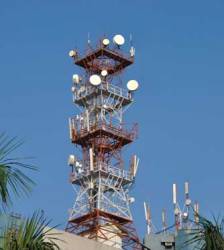[Updated February 13, 2013] The GPS industry has formed a new trade association called the GPS Innovation Alliance that will work to educate policy makers and the public about the GPS system and protect the interests of the hundreds of organizations and users that rely upon the constellation, according to sources familiar with the new group.
[Updated February 13, 2013] The GPS industry has formed a new trade association called the GPS Innovation Alliance that will work to educate policy makers and the public about the GPS system and protect the interests of the hundreds of organizations and users that rely upon the constellation, according to sources familiar with the new group.
The new organization will be based in Washington, D.C., according to a source familiar with the effort and was formally announced today (February 13, 2013) with backing from the Coalition to Save Our GPS and the GPS Industry Council (USGIC).
Two long-time members of the USGIC — NovAtel Inc., and Topcon Positioning Systems — join John Deere, Garmin and Trimble as founding members of the Alliance.
Affiliate members include the Association of Equipment Manufacturers (AEM), General Aviation Manufacturers Association (GAMA) and the National Association of Manufacturers (NAM).
Although the details are still being worked out, the new organization is expected to have an executive committee as part of its management structure and, ultimately, more than 200 members, said sources who asked to remain anonymous because they are not authorized to speak on the record ahead of the announcement.
The Alliance has it roots in a fight over frequency interference that consumed the GPS community for much of 2011 and 2012. The conflict, which pitted GPS users against telecom and computer interests, started early in 2011 when the Federal Communications Commission gave conditional permission to the Virginia-based firm LightSquared to launch a high-powered, wireless broadband network using spectrum adjacent to that used by GPS.
It soon became clear the system’s signals had the potential to disrupt GPS service across the country, and the navigation and timing community hastily formed the Coalition to Save Our GPS to support testing and represent the industry’s perspective.
The Coalition expanded industry involvement far beyond the handful of GPS manufacturers that formed the core of the USGIC, founded in 1991, to a diverse group of GPS-dependent users including mapping firms, agricultural organizations such as the USA Rice Federation, and other users including the American Sailing Association.
At the time of the LightSquared controversy, formation of the coalition was especially important, given that federal agencies which might normally speak up for civil GPS users appeared to be under pressure from the White House to fall in line behind the LightSquared project — a potential engine for jobs and innovation.
The Coalition will remain in place and continue to stay focused on the LightSquared issue, said a source familiar with the organization. The FCC withdrew its conditional permission last February after tests confirmed the wireless network did indeed interfere with GPS. It is now weighing several proposals that will determine whether and how the project might proceed.
The Alliance will have a broader mandate, covering issues beyond protection of the GPS frequencies.
“This is a great opportunity to talk with and work with policy makers,” said another source familiar with the project. “A lot is coming down the pike on aviation and there are so many other issues,” the source added, citing agriculture and the importance of GPS to exports.
One policy maker is looking forward to working with the new organization.
“I would hope they would use our great website,” said Jan Brecht-Clark, the new director of the National Coordination Office for Space-Based Positioning, Navigation, and Timing. “I also hope that, if they have any type of educational outreach, they might approach us to get a little bit of support. We’re developing some educational material and are very interested in supporting educational outreach. . . . hopefully, we can help in supporting any effort they’ve got.”






